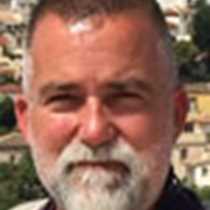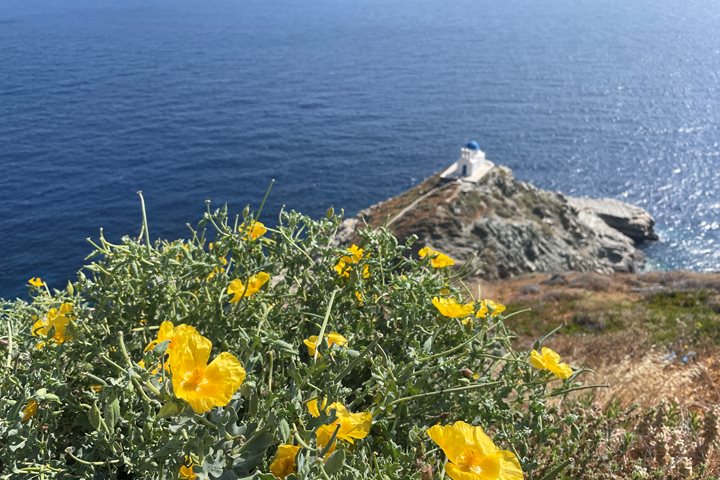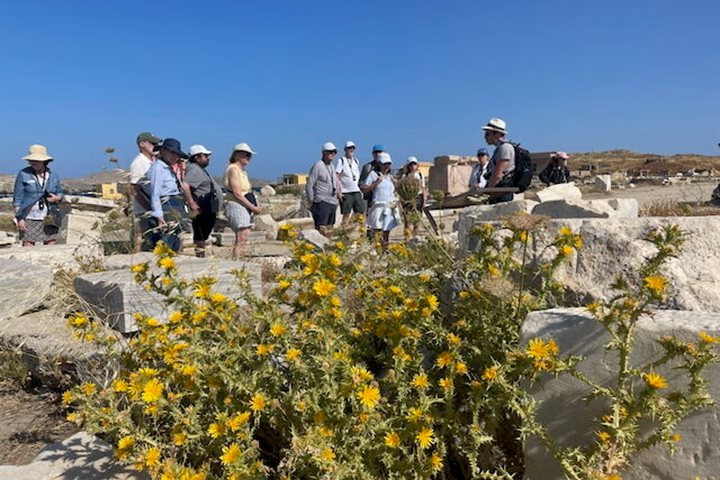In the early morning, Sea Cloud arrived at the channel between the islands of Rinia and Delos and dropped anchor. We were here to visit Delos and the ancient Sanctuary of Apollo and Artemis, one of the most sacred sites of antiquity. After breakfast, we chose an early visit to the vast archaeological site in order to avoid possible crowds of day-trippers from nearby Mykonos — and this plan worked beautifully for the group as we would later see. A long ferrying by ship’s Zodiacs brought our groups ashore, and we met up with our guides, Smaro and Roula. Together, we proceeded through the forum into one of the residential districts. Here, we entered the ruins of a once-lavish Roman peristyle house. In several of these residences, we viewed mosaic flooring with still-vibrant coloration. Our guides brought us into the great space of the 4th century Greek theater, built into the hillside and later used by the Romans.
From the residential district, we retraced our steps and passed into the ancient Sanctuary of Apollo and Artemis. A length of scaffolding gave evidence that the site’s archaeologists were restacking some fallen columns from the stoa of Philip IV, dating from the end of the 4th century. We also viewed the foundations of the ancient temples dedicated to the gods and large pieces of a colossal statue of Apollo. Then we arrived at the Avenue of the Lions, a series of feline statues on pedestals looking east to the legendary birth site of the twin gods.
Our groups made their ways through the Agora of the Italians, and we finished our tour near the site’s museum, now under reconstruction. After the tour, several guests accompanied staff in climbing to the island’s highest point, Mount Kythnos, for expansive views of the neighboring Cycladic Islands. Other guests continued to explore the site on their own. By 1130 hours, the last of our guests departed Delos by Zodiac just as a crowd of new visitors was arriving to the island.
Back aboard Sea Cloud, we enjoyed another wonderful lunch as the ship got moving to the southeast. Noting that the considerable breeze was from the same direction as we needed to sail, the captain and the expedition leader devised an addition to the itinerary: we would continue under engine power using a few jib sails to assist and proceed directly to Amorgos. With this plan, we would arrive early in the evening, so guests could go ashore if they wished.
In the afternoon, photo instructor Anna Mazurek presented “Introduction to Expedition Photography.” By 1830 hours, Sea Cloud arrived at the small port of Katapola on Amorgos and settled into a calm anchorage for the night. We dined on the lido deck with the picturesque bay and twinkling lights of the port town around us. After the meal, a number of our guests went ashore to enjoy the vibrance of a Greek island port town after sunset. By universal agreement, guests were most appreciative that they had the opportunity to experience this.







